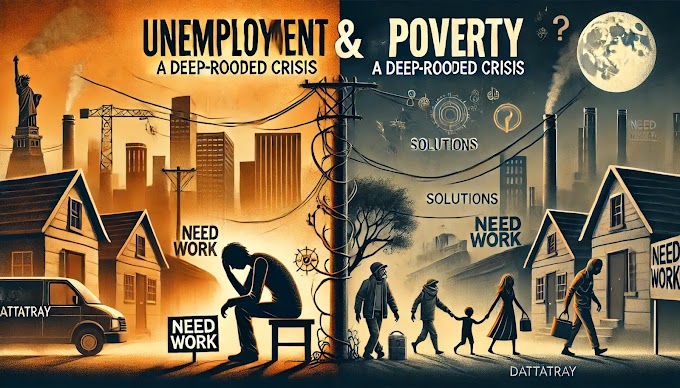Types of Economies: Socialist, Capitalist, and Mixed Economies
Economies around the world can be classified into different types based on their structure and the role the government plays in economic decision-making. The three primary types of economies are social (or socialist), capitalist, and mixed economies. Each of these systems represents a different approach to managing economic resources and addressing issues like production, distribution, and wealth allocation.
This blog will explore these three types of economies in depth, discussing their key characteristics, historical contexts, theoretical underpinnings, notable economists associated with each system, and examples of countries that have adopted these economic models.
1. Capitalist Economy
Overview
A capitalist economy, also known as a free-market or market-based economy, is one where private individuals and businesses own the factors of production—land, labor, and capital. Economic activities are driven by the forces of supply and demand, with minimal government intervention.
Key Characteristics
- Private Property: Individuals and corporations have the right to own and control property and assets.
- Profit Motive: The primary goal of businesses and individuals is to generate profit.
- Market Competition: Companies compete with one another to offer the best goods and services, leading to innovation and efficiency.
- Limited Government Intervention: The government’s role is restricted to protecting property rights, enforcing contracts, and ensuring the rule of law.
- Consumer Sovereignty: Consumers have the power to decide what is produced by their purchasing choices.
Theoretical Underpinnings
The theoretical foundation of capitalism can be traced back to the works of Adam Smith, particularly his seminal book The Wealth of Nations (1776). Smith argued that the "invisible hand" of the market, driven by self-interest, leads to efficient outcomes and benefits society as a whole.
Key Theorist: Adam Smith
Smith's ideas were revolutionary in establishing the principles of a capitalist economy. He advocated for free markets, competition, and limited government interference, which laid the groundwork for modern economic thought.
Examples
- United States: The U.S. is often cited as a prime example of a capitalist economy, characterized by a strong emphasis on private enterprise, individualism, and a relatively free market system.
- Hong Kong: Known for its low taxes, free trade policies, and minimal government intervention, Hong Kong is another example of a highly capitalist economy.
Advantages
- Efficiency: Competition drives efficiency and innovation.
- Economic Growth: Capitalist economies tend to have higher rates of economic growth due to entrepreneurial activities.
- Consumer Choice: Wide variety of goods and services available to consumers.
Disadvantages
- Income Inequality: Wealth tends to be concentrated among a small segment of the population.
- Market Failures: Situations where markets do not allocate resources efficiently on their own, such as in cases of monopolies or externalities.
2. Socialist Economy
Overview
A socialist economy is one where the government, or the state, owns and controls the means of production and distribution. The primary objective is to ensure equitable distribution of wealth and income, and to meet the needs of all citizens rather than generating profit.
Key Characteristics
- Public Ownership: The state owns and controls industries and resources.
- Central Planning: Economic decisions regarding production and distribution are made through a central plan by the government.
- Social Welfare: Focus on reducing inequality and providing social welfare services like healthcare, education, and housing.
- No Profit Motive: Economic activities are aimed at fulfilling societal needs rather than generating profits.
Theoretical Underpinnings
Socialist economic theory is rooted in the ideas of Karl Marx and Friedrich Engels, who critiqued the inequalities and exploitation inherent in capitalism. In their work The Communist Manifesto (1848), Marx and Engels called for the proletariat (working class) to overthrow the capitalist system and establish a classless society where resources are communally owned.
Key Theorist: Karl Marx
Marx’s ideas form the basis of socialist and communist thought, advocating for a classless society where the means of production are communally owned. His theories on surplus value, class struggle, and the role of the state in the economy have profoundly influenced socialist economies.
Examples
- Soviet Union: The Soviet Union (1917-1991) is one of the most well-known examples of a socialist economy, where the state controlled all economic activities.
- Cuba: Another example of a socialist economy, where the government controls most of the economy, including industries like healthcare, education, and transportation.
Advantages
- Reduced Inequality: Wealth is more evenly distributed across the population.
- Social Welfare: Strong focus on providing essential services to all citizens.
- Stability: Central planning can lead to greater economic stability in certain contexts.
Disadvantages
- Lack of Efficiency: Without the profit motive, there can be less incentive for innovation and efficiency.
- Bureaucratic Inefficiencies: Central planning can lead to inefficiencies and slow decision-making.
- Limited Consumer Choice: Consumers may have fewer choices in goods and services.
3. Mixed Economy
Overview
A mixed economy combines elements of both capitalism and socialism. It features a blend of private and public ownership of resources and industries. The government intervenes to correct market failures, provide public goods, and ensure social welfare, while still allowing for private enterprise and market competition.
Key Characteristics
- Private and Public Ownership: Both the private sector and the government own and control resources and industries.
- Government Intervention: The government regulates certain industries, provides public goods, and implements policies to reduce economic inequalities.
- Market Mechanism: Market forces of supply and demand still play a significant role in the economy.
- Social Welfare: The government ensures a safety net for its citizens through social welfare programs.
Theoretical Underpinnings
The mixed economy is seen as a pragmatic approach that takes the strengths of both capitalism and socialism while trying to mitigate their weaknesses. Theories supporting mixed economies often focus on the need for government intervention to correct market failures and ensure a more equitable distribution of resources.
Key Theorist: John Maynard Keynes
John Maynard Keynes is often associated with the mixed economy due to his advocacy for government intervention in the economy to stabilize markets and smooth out the business cycle. His ideas, outlined in The General Theory of Employment, Interest, and Money (1936), influenced many Western governments’ approaches to economic policy during the 20th century.
Examples
- United Kingdom: The UK has a mixed economy with a significant role for both private enterprise and government intervention, particularly in sectors like healthcare (NHS) and education.
- India: After independence, India adopted a mixed economy model, with substantial government control in key industries and a regulated market economy.
Advantages
- Balanced Approach: Combines the efficiency of markets with the social welfare provided by government intervention.
- Economic Stability: Government can intervene to stabilize the economy during downturns.
- Social Welfare: Provides a safety net for vulnerable populations.
Disadvantages
- Potential for Government Overreach: The balance between market freedom and government control can be delicate, and excessive intervention can stifle economic dynamism.
- Inefficiencies in Public Sector: Publicly owned industries can sometimes be less efficient than their private counterparts.
Conclusion
Each economic system—socialist, capitalist, and mixed—has its own set of advantages and disadvantages, and the effectiveness of each system often depends on the specific context in which it is implemented. While capitalism promotes efficiency and innovation, it can also lead to inequality. Socialism aims for equality but can struggle with inefficiency. Mixed economies attempt to blend the best of both systems but face challenges in finding the right balance between government intervention and market freedom.
Understanding these economic systems is crucial for analyzing different countries' approaches to economic policy and the broader implications for global economic development. Each system reflects different priorities, from individual freedom and profit maximization to social welfare and equitable resource distribution. As the global economy continues to evolve, the debate over the most effective economic system remains a central issue in economics and public policy.
.png)







.png)

.png)

.gif)
.png)
0 Comments